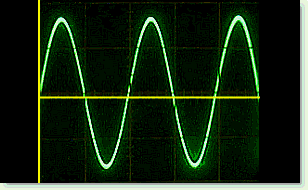2006 ARRL Frequency Measurement Test
This is the first time I ever tried this. It was a lot of fun, and I learned a lot.


I took a stab at the 2006 ARRL Frequency Measurement Test for the fist time this year.
The 2006 ARRL Frequency Measuring Test Schedule
Rig Kenwood TS-2000
Antenna G5RV
I measured my offset using the Canadian CHU Standards on 3.330 Mhz and 7.335 Mhz
I used 2 separate software packages 1 running on a Windows XP laptop, DigiPan, one under Linux Baudline.
The numbers I submitted are the numbers I got from DigiPan. I am still learning how to run Baudline.
The measurements where made by setting the rig in USB mode and tuning down 1000Hz from the expected signal. I let DigiPan tell me the frequency of the signal I was interested in. Simply adding the displayed frequency in DigiPan with the VFO frequency would give me the exact frequency of the carrier signal. I measured both of the CHU standards, and noted the offset.
When I did my practice runs the evening before the actual test my TS-2000 was off more then 400 Hz in frequency. I decided the night of the test to align the rig closer to the CHU standards. I managed to get the rig aligned with in 10 Hz of the standards before the test. This was probably not the time to realign the TS-2000. I took the measurements with the covers off the radio, and after the fact I realized that temperature stability of the local oscillator was probably compromised.
Once I found the signal on the TS-2000 I tuned down in frequency and then I used DigiPan to measure the frequency of the carrier in HZ. I took multiple readings during the test, and pitched out the odd ones. It was a simple matter of applying my offset numbers from the measurement of CHU to the numbers of the actual measurement.
Here are my results, I did not copy 160M or the west coast station.
80m - 3587118.3
40m - 7038806.1
The unofficial published numbers as measured at W1AW where sent to me by Joseph Carcia.
160m - 1854317.5 Hz
80m - 3587117.5 Hz
40m - 7038804.9 Hz
I will update the numbers when I get official numbers from the ARRL.
Not to bad for a first try I was .8 Hz low on 80 meters and 1.2 Hz high on 40 meters.
I did not process the numbers from BaudLine, but I did save them all as audio files. I need to go back and check to see how much difference the two programs reported.
73 de KB9JJA
TIME AND FREQUENCY STATIONS
The 2006 ARRL Frequency Measuring Test Schedule
Rig Kenwood TS-2000
Antenna G5RV
I measured my offset using the Canadian CHU Standards on 3.330 Mhz and 7.335 Mhz
I used 2 separate software packages 1 running on a Windows XP laptop, DigiPan, one under Linux Baudline.
The numbers I submitted are the numbers I got from DigiPan. I am still learning how to run Baudline.
The measurements where made by setting the rig in USB mode and tuning down 1000Hz from the expected signal. I let DigiPan tell me the frequency of the signal I was interested in. Simply adding the displayed frequency in DigiPan with the VFO frequency would give me the exact frequency of the carrier signal. I measured both of the CHU standards, and noted the offset.
When I did my practice runs the evening before the actual test my TS-2000 was off more then 400 Hz in frequency. I decided the night of the test to align the rig closer to the CHU standards. I managed to get the rig aligned with in 10 Hz of the standards before the test. This was probably not the time to realign the TS-2000. I took the measurements with the covers off the radio, and after the fact I realized that temperature stability of the local oscillator was probably compromised.
Once I found the signal on the TS-2000 I tuned down in frequency and then I used DigiPan to measure the frequency of the carrier in HZ. I took multiple readings during the test, and pitched out the odd ones. It was a simple matter of applying my offset numbers from the measurement of CHU to the numbers of the actual measurement.
Here are my results, I did not copy 160M or the west coast station.
80m - 3587118.3
40m - 7038806.1
The unofficial published numbers as measured at W1AW where sent to me by Joseph Carcia.
160m - 1854317.5 Hz
80m - 3587117.5 Hz
40m - 7038804.9 Hz
I will update the numbers when I get official numbers from the ARRL.
Not to bad for a first try I was .8 Hz low on 80 meters and 1.2 Hz high on 40 meters.
I did not process the numbers from BaudLine, but I did save them all as audio files. I need to go back and check to see how much difference the two programs reported.
73 de KB9JJA
TIME AND FREQUENCY STATIONS
